| Columns Retired Columns & Blogs |
I recently heard one of Creek's older 55WPC integrated amps w/ a NAD cd player and Thiel CS2.4 loudspeakers. While a little under-powered for Thiels, the sound was quite nice, musically pleasing.
I measured the Creek Evolution 50A using Stereophile's loan sample of the top-of-the-line Audio Precision SYS2722 system (see the January 2008 "As We See It" and www.ap.com). Before performing any measurements on an amplifier, I run it for an hour with both channels driven at 1/3 its rated power into 8 ohms; this is the level at which the maximum amount of power is dissipated in the output devices with a class-A/B topology. However, when I tried this with the Creek Evolution 50A, the amplifier turned itself off after 20 minutes, its front-panel display showing the message "OVERHEATED." An infrared thermometer indicated that the internal heatsinks, visible through slots in the top panel, were at 140.9°F (61.3°C). Thermally, 1/3 power is very much the worst case for a class-A/B amplifier, but it looks as if the Creek's price has been kept affordable by using undersize heatsinks. This probably won't be a problem with normal use, but the amplifier might go quiet if used to supply continuous loud music at a party. I let the 50A cool down and was then able to continue with the testing.
The maximum gain at 1kHz into 4 ohms was 32.5dB with a single-ended signal but, surprisingly, 6dB lower than that with a balanced signal fed to line input 4. The Evolution 50A preserved absolute polarity (ie, was non-inverting) with both single-ended and balanced signals, the latter suggesting that the XLR jacks are wired with pin 2 hot. The input impedance was constant with frequency, at just under 11k ohms single-ended and 42k ohms balanced.
The output impedance at low and middle frequencies, including 6' of speaker cable, was very low, at 0.096 ohm, rising very slightly to 0.113 ohm at 20kHz. As a result of this low impedance, the modulation of the amplifier's frequency response, due to the Ohm's law interaction between this source impedance and the way in which our simulated loudspeaker's impedance changes with frequency, was minimal (fig.1, gray trace). The traces in this graph, which was taken with the volume control at its maximum ("0dB" on the display) and a balanced signal, show that the Creek has a very wide bandwidth: –2dB at 100kHz, as specified. This correlates with the very short risetimes seen in the amplifier's reproduction of a 10kHz squarewave (fig.2), which is commendably free from overshoot or ringing. The shape of a 1kHz squarewave was essentially perfect (fig.3). The frequency response remained the same at lower settings of the volume control, which operated in accurate 1dB steps.
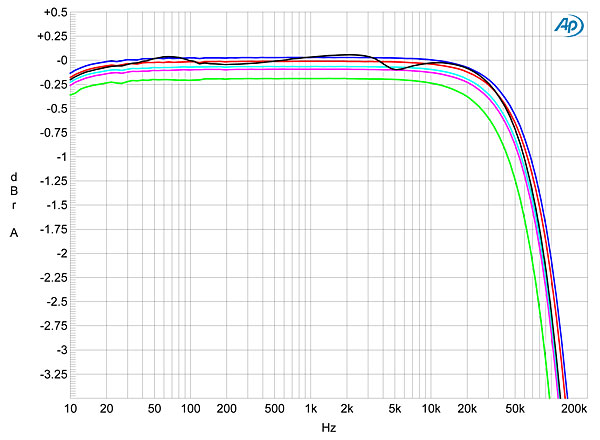
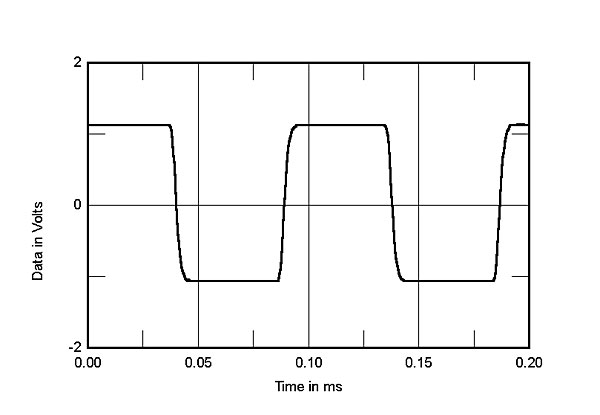
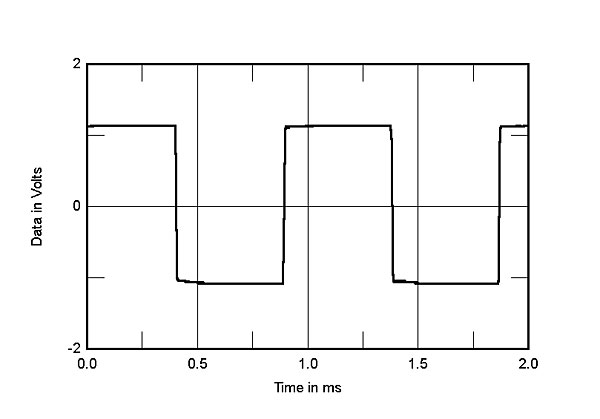
The Treble and Bass controls offer a nominal 10dB of maximum boost and cut. However, fig.4 indicates that the swing is closer to ±13dB below 40Hz, and +11/–12dB above 10kHz. Channel separation (not shown) was good rather than great, at 70dB L–R and 80dB R–L below 2kHz.
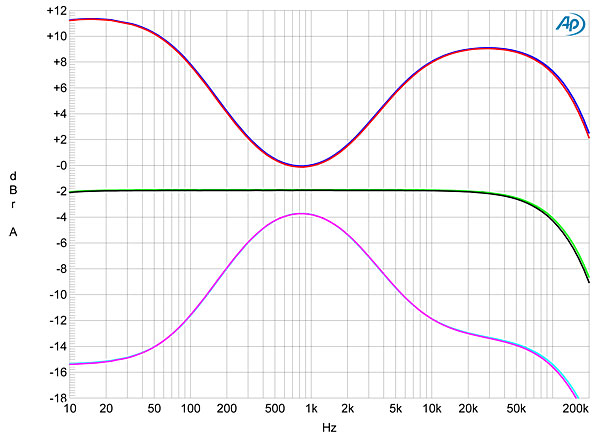
The Evolution 50A was a quiet amplifier. I test an integrated amplifier's signal/noise ratio with the input shorted but the volume control at its maximum, which is very much the worst-case situation. The unweighted wideband ratio, ref. 2.83V into 8 ohms, was good at 69.4dB left and 70.2dB right, improving to 84.6 and 84.9dB, respectively, when the measurement bandwidth was restricted to the audioband. Switching an A-weighting filter into circuit gave a further 3dB improvement in the measured ratios.
The Evolution 50A is specified as having a maximum power output of ">55W" into 8 ohms or ">85W" into 4 ohms. Figs.5 and 6 show that the THD+noise reaches 1%, our usual definition of clipping, at 63W into 8 ohms (18dBW) and 96W into 4 ohms (16.8dBW). The downward slope below 20W or so of the traces in these graphs suggests that any distortion harmonics are buried beneath the noise floor until a few dB below clipping. I therefore examined how the THD+N percentage changed with frequency at a level, 12.65V, equivalent to 20W into 8 ohms or 40W into 4 ohms, where I could be sure I was looking at actual distortion rather than noise. The result is shown in fig.7; the Evolution 50A offers very low levels of distortion in the bass and midrange, with the rise in THD in the treble due to the decreasing effectiveness of negative feedback as the frequency rises.
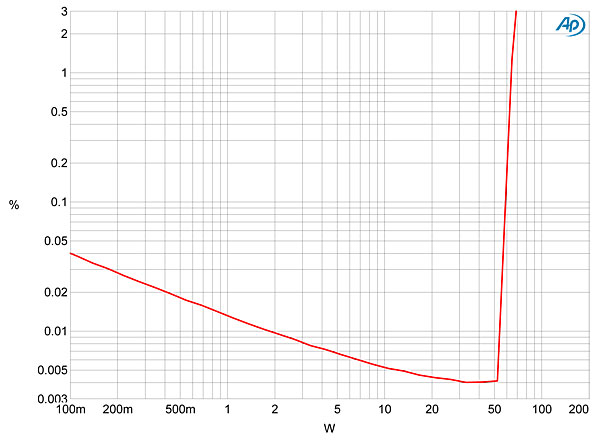
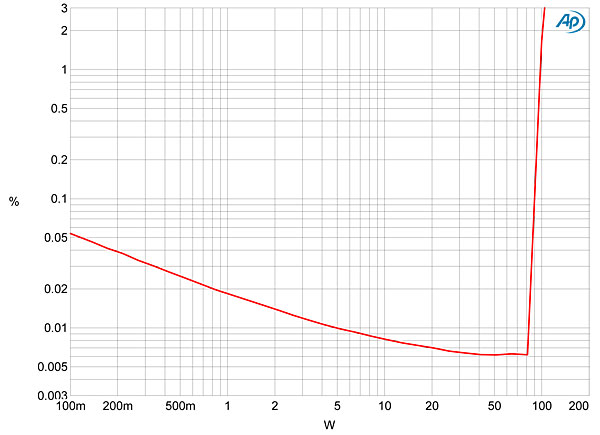
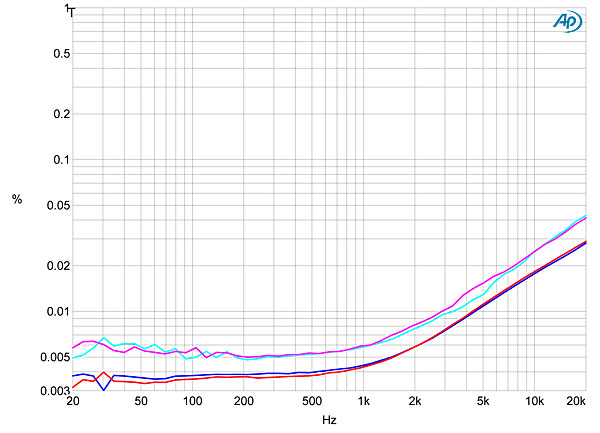
Despite the low level of THD, the distortion waveform (fig.8) has spikes visible at the sinewave's zero-crossing points, suggesting a low level of output-stage bias current. These spikes are associated with a picket fence of high-order distortion components (fig.9), which will be more audible than might be thought the case from their very low levels.
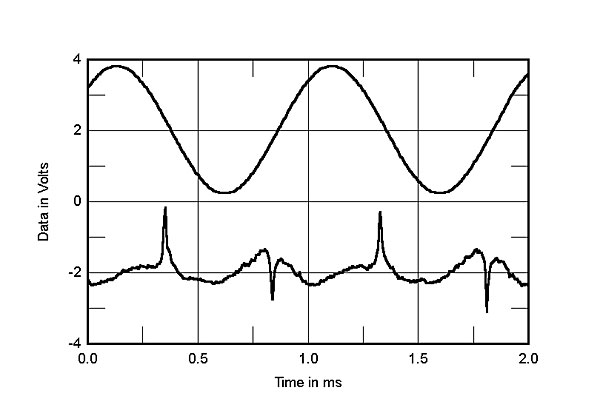
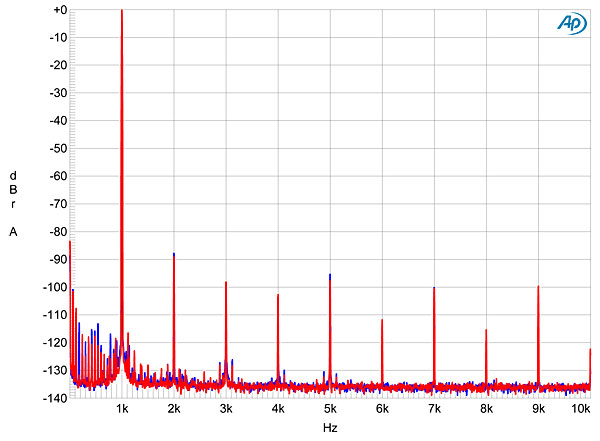
Finally, despite the decreasing circuit linearity at high frequencies, the Evolution 50A produced relatively low levels of intermodulation products when fed an equal mix of 19 and 20kHz tones at a level just below visible clipping on an oscilloscope screen (fig.10). However, the 1kHz difference product is about 12dB higher in level in the left channel (blue trace) than in the right (red).
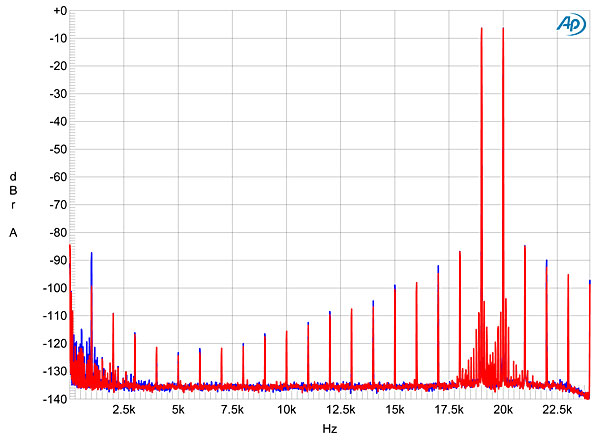
Considering its affordable price, Creek's Evolution 50A measures fundamentally well, though I didn't like the look of those crossover distortion spikes.—John Atkinson

I recently heard one of Creek's older 55WPC integrated amps w/ a NAD cd player and Thiel CS2.4 loudspeakers. While a little under-powered for Thiels, the sound was quite nice, musically pleasing.

I'm a very happy owner of their briefly released A50i integrated, purchased used from Echo Audio in Portland, Oregon. (Kurt!)
Opening her up and by-passing the switching and volume controls, and going direct into the amp section (using 18 db of Harrison Labs attenuators) from my Lavry DA11 (digitally fed by an MF V-link 192 via XLR) creates a very natural, clear, wide open, soundstage for miles, anything-but-electronic sound.

just watched his Youtube vid for setting up the MMF 5.1; he is cool. He says something like "Im the president or whatever", Really down to earth! Roy being stoked about 50A makes me want to audition it! Slave that sucker!